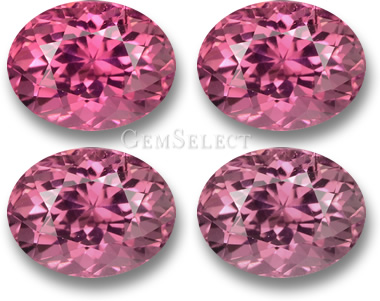|
|
Your Details
|
|
Your Details
|
Reviewed By Andreas Zabczyk
Gemstone Color SaturationGemstone color saturation is a key factor in determining the overall beauty and value of a gemstone. It refers to the intensity or vividness of a gemstone’s color, and it plays a significant role in how a gem is perceived. Hue is the basic concept of color and refers to the property of things that leads us to label them as "blue", "red", "green", "yellow" and so on. You don't need to study color theory to know that there are many different sorts of reds. These many reds differ with respect to hue, saturation and tone.
For example, some reds have a slightly orange hue, while others have a bluish hue. There are continuous variations from one hue to another, constrained by the natural order of colors of the spectrum. The order of colors is often illustrated on a color wheel. Color saturation is one of the most important elements in gem grading, alongside hue (the color itself) and tone (the lightness or darkness of the color). A gemstone with high color saturation displays a rich, deep color that draws attention and showcases the gem’s natural brilliance. 
Pink Tourmaline Saturation
Tone represents the depth of color, ranging from colorless to black. In general, as light colors become darker they become more saturated. But as a color becomes very dark, verging on black, tone increases and saturation decreases. Gemstone tone is often described as "light", "medium-light", "medium", "medium-dark" and "dark". The most valuable gemstones are those that exhibit a pure color and only slight hues of other colors in addition to their primary color. In practice, such purity of color is extremely rare. Almost all blue sapphires, for example, have a secondary hue, whether it be violet or green. Similarly, most emeralds have a secondary hue of blue or yellow. |
||||||
